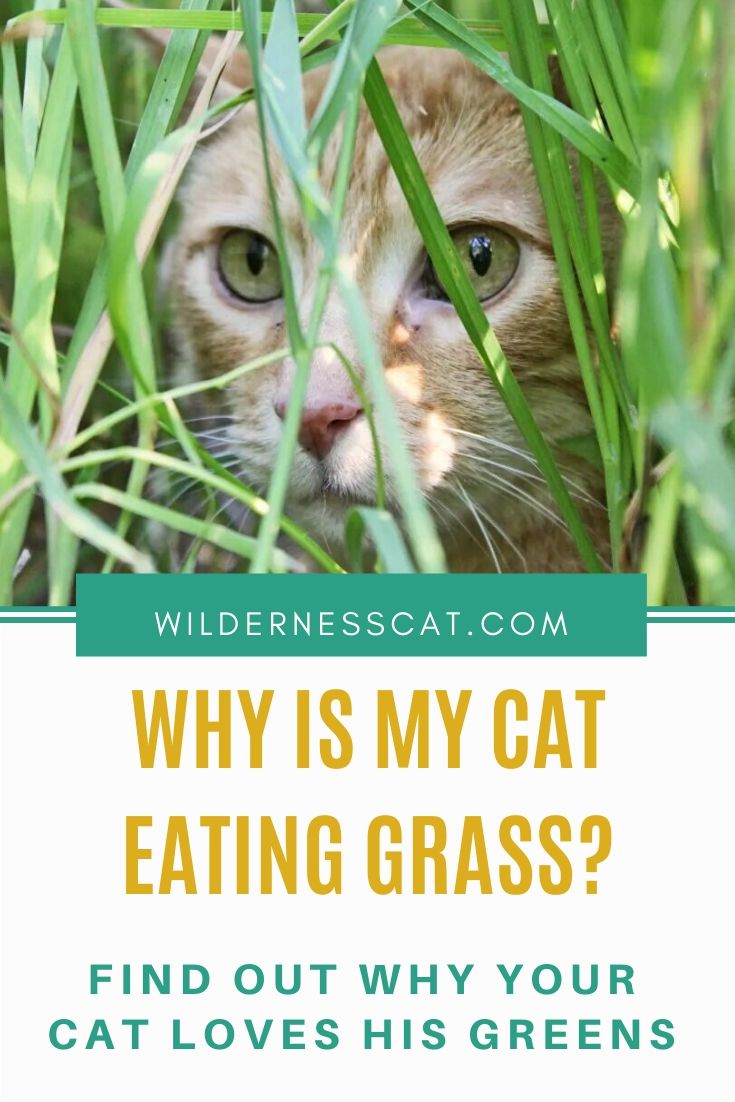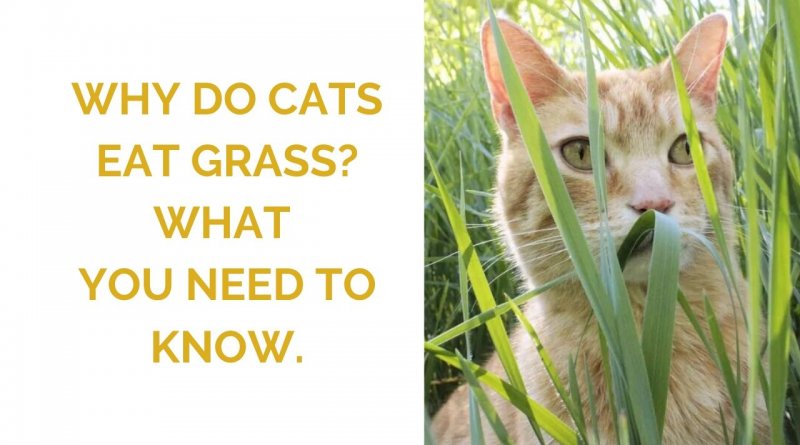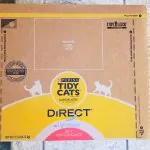Why Do Cats Eat Grass? What You Need to Know
Last Updated on
You’re out on the trail with your cat, enjoying the sights and smells, and then you notice your cat has paused by the nearest patch of grass and is now munching away. We know cats are obligate carnivores, so why is your cat eating something with little-to-no nutritional value to him?
In this article, we’re going to delve deeper into the reasons why cats eat grass and whether or not it’s safe. We’ll also explain what cat grass is, and how you can grow it at home.
Quick Navigation
Disclaimer: Some of the products recommended in this post have affiliate links. If you make a purchase through these links, we’ll receive a small commission, but it won’t cost you any extra. Thank you!
Why do cats eat grass?
We don’t have a definite answer.
While we’ve observed that many cats love to nibble on grass, no one is sure just why. Like we mentioned above, it’s not necessary for a nutritionally complete diet. Cats derive little nutrition from grass and they can definitely live without it. Even though it’s not necessary, the cats in our lives are telling us that it’s a fun addition. Perhaps cats eat grass just like we eat ice cream—because it tastes good. Perhaps they like the texture.
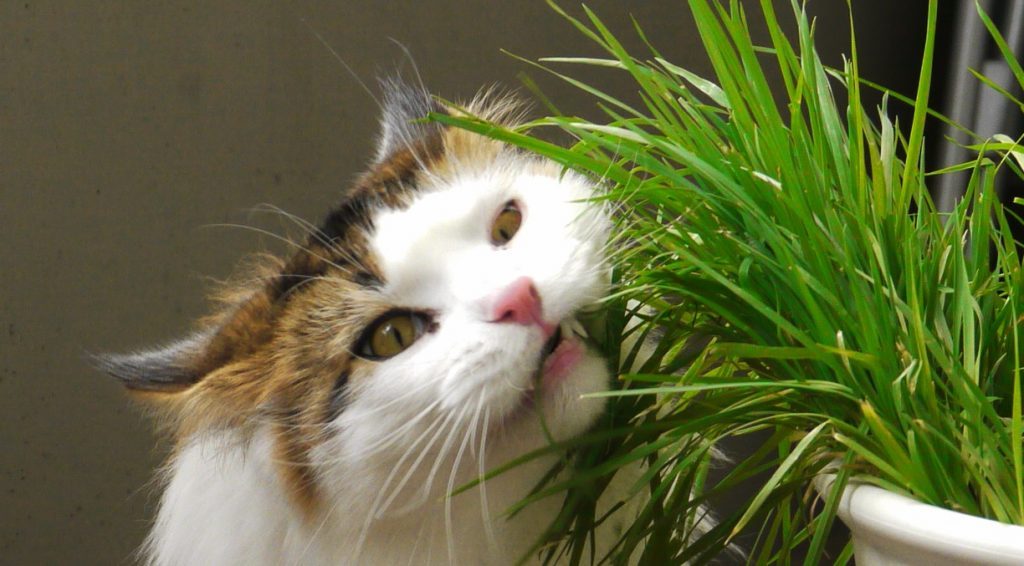
Other theories on why cats eat grass.
“Maybe it’s tasty” isn’t all the cat community has come up with, though. Let’s take a closer look at some of the other theories answering the question of why cats eat grass.
Grass may act as a high-fiber digestive aid.
The high fiber content in most grass aids digestion, so constipated cats might eat grass to get things moving. This is plausible. Cats in the wild consume indigestible fiber in the form of hair and claws from their prey. That prey would likely also have undigested vegetable matter in its stomach. Some human-created diets, for example, most raw cat food diets, don’t include a substitute form of fiber. Without enough fiber in their diet, cats can become constipated. Grass acts as a laxative and helps to clear out backed-up systems.
Cats may eat grass in order to boost lacking vitamins.
Grass, wheatgrass and barley grass, for example, contains concentrations of vitamins such as B, C, and K, so it’s possible that a cat whose diet lacks these vitamins would snack on grass to fill their nutritional needs.
However, we need to consider how much of a benefit vitamin-deficient cats would actually get from the grass. The answer is unclear. It depends on how long the grass is in the cat’s system and whether or not it’s digested at all. A lot of cats throw up grass shortly after consuming it, so they won’t be able to absorb all of the nutrients within the grass. Unless your cat is showing other signs of deficiency, anemia, skin problems, weakness, etc., I wouldn’t worry too much about this theory.
Grass is a natural emetic and can help bring up hairballs.
Cats may also use the grass as a natural emetic (vomit inducer), to help bring up distressing hairballs or relieve a stomach-ache.
Because cats are obligate carnivores, they lack the digestive enzymes necessary in order to break down plant matter. When cats eat a large amount of grass, most of it will come back up in an undigested form. This regurgitation may help your cat get rid of troublesome hairballs or stomach discomfort. Vomiting induced by grass consumption usually only consists of a few strands of grass and clear liquid or a hairball. If your cat is eating grass and then throwing up food, take a look at our guide to cat vomiting.
When it comes down to it, we just don’t know why cats eat grass. We do know that a lot of cats do it and it’s not something to worry about. It doesn’t mean your cat is sick and he might just eat grass because he enjoys it.
Is grass safe for cats?
For the most part, grass is safe for cats to nibble on. In a few select situations, though, it’s not a good idea to let your cat eat the grass. Let’s take a closer look at those situations.
Keep your cat away from grass treated with pesticides.
Unless you live in a rural environment without many neighbors, much of the grass growing outdoors has been treated with pesticides. Most lawn pesticide treatments are only harmful before they’ve dried, 24-48 hours, but it’s hard to tell your cat to watch out for flags and signs indicating a fresh treatment. If your cat encounters a freshly pesticide-treated lawn and chomps on the grass, they could get sick. Check out this article from wagwalking.com to learn more about pesticide toxicity in cats.
If you walk your cat outside, just be aware of what they’re doing and avoid areas that have been recently treated with pesticides.
Mature grass can be dangerous.
Many cereal grasses (barley grass, wheatgrass) grow awns when mature. An awn is a stiff, bristle-like appendage on the grass. These awns are sharp and can be dangerous if your cat eats them.
Fortunately, most cats don’t go after tough, mature grass, so this isn’t much of a concern. Cat grass grown in a pot rarely reaches maturity and your cat can eat it in complete safety.
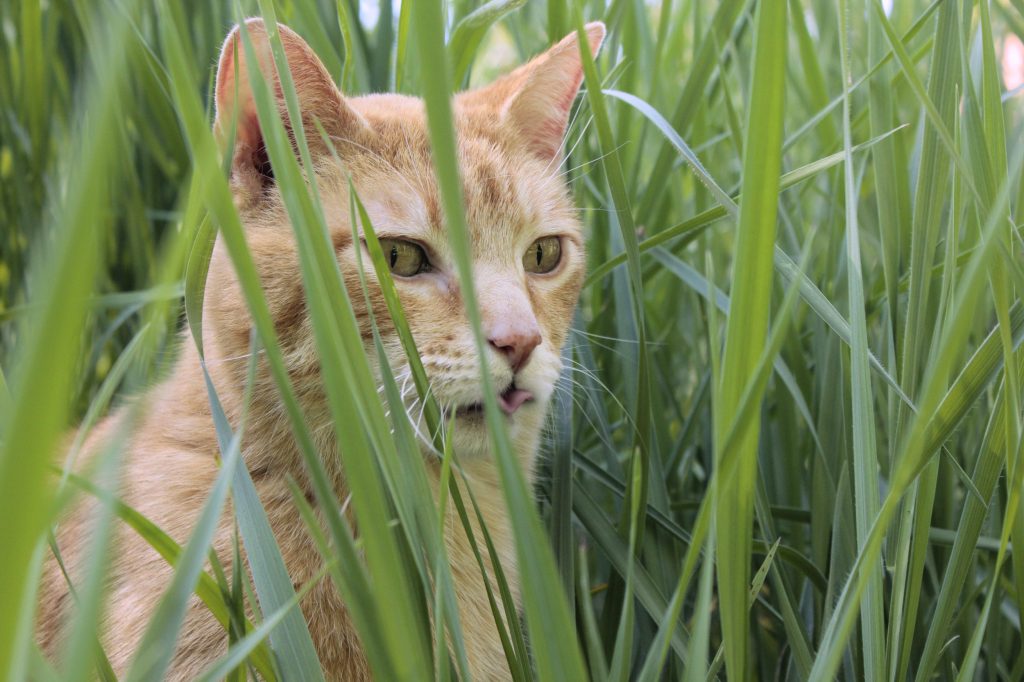
What is “cat grass”?

Now that we’ve gone over why cats may eat grass and whether or not it’s safe for them to eat, let’s take a closer look at cat grass. If you’ve been to a pet store, you’ve probably noticed cat grass growing kits. Maybe you’ve wondered what makes something cat grass—is it a special type of grass bred just for cats to eat?
Cat grass is just a label that is used on safe-to-eat grasses that are marketed for cat guardians to grow at home. The cat grass label encompasses a number of grass varieties. These grass varieties are generally cereal grasses: wheatgrass, oat grass, barley, and ryegrass are just a few varieties that fall under this umbrella.
When young, these cereal grasses are crisp and appealing to most cats and don’t present any danger. They are also easy to grow at home in a small pot.
How to grow cat grass at home.
If your cat always wants to stop and taste the greenery whenever you take him out for a walk or has an unusual interest in the houseplants, try growing a pot of cat grass in your home. A designated pot of cat grass can help to divert his attention away from the plants you’d rather have un-nibbled. Note: if your cat has a fascination with greenery, it’s important that you don’t keep any harmful houseplants. If you aren’t sure which common plants are poisonous to cats, check out this list from PetMD.
Cat grass is usually easy to grow. Most cat grass kits come with either a single variety of seed or a blend of grass seeds and seed-starting soil. Keep the seeds moist at all times but don’t soak them. Within 3-7 days the grass should sprout. Once the grass sprouts, you can reduce the amount of water to prevent mold growth, but continue to water regularly—at least once a day. Make sure the grass is in a sunny location.
It will take up to two weeks after the grass sprouts for it to reach four inches. That’s when it’s mature enough for your cat to eat. Allow your cat to nibble the grass straight from the container. A pot of cat grass usually lasts for a few weeks before it becomes rootbound and begins to wilt. Cereal grasses have large root systems when matured and a small indoor pot isn’t large enough to sustain the plant longterm. This means it’s time to get some more seeds started for your cat!
Cat grass kits aren’t expensive—they usually cost from $2 – $5.00 and contain everything you need to get started. I’ve featured the best-selling cat grass kit on Chewy.com below. It has a 4.1 out of 5-star rating and 84% of reviewers agree that they would recommend it to a friend.
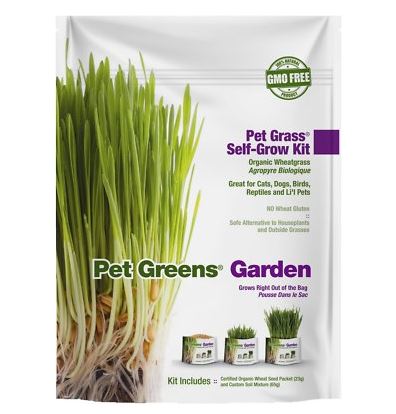
Shop more cat grass on Chewy.com.
Did you find this post useful? Pin it for later!
